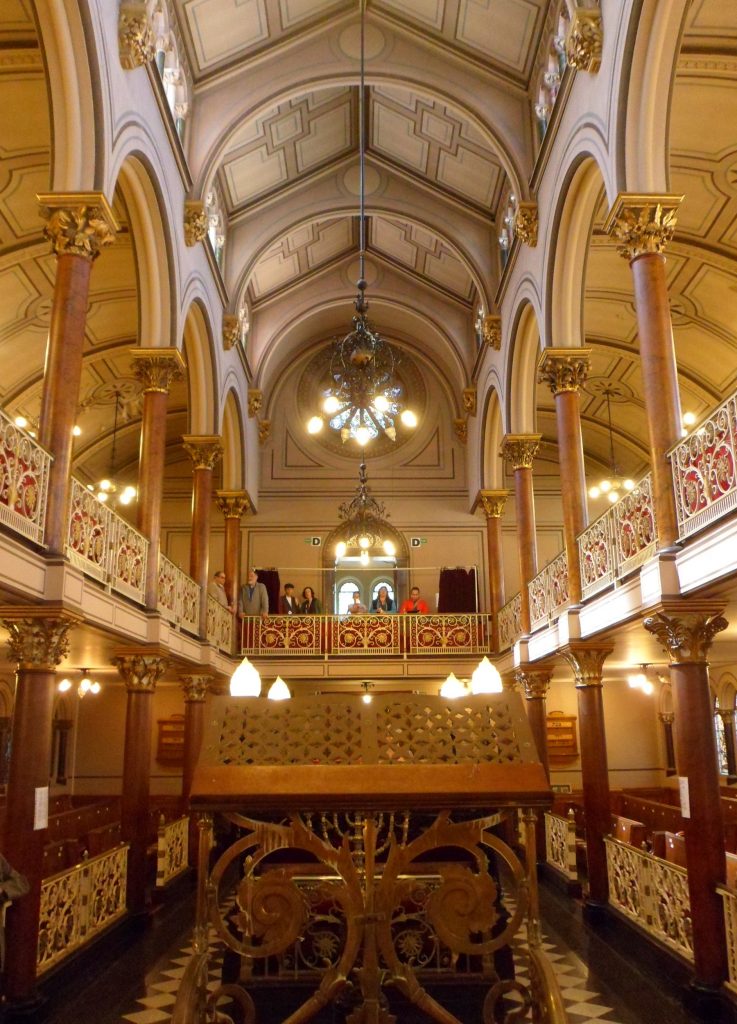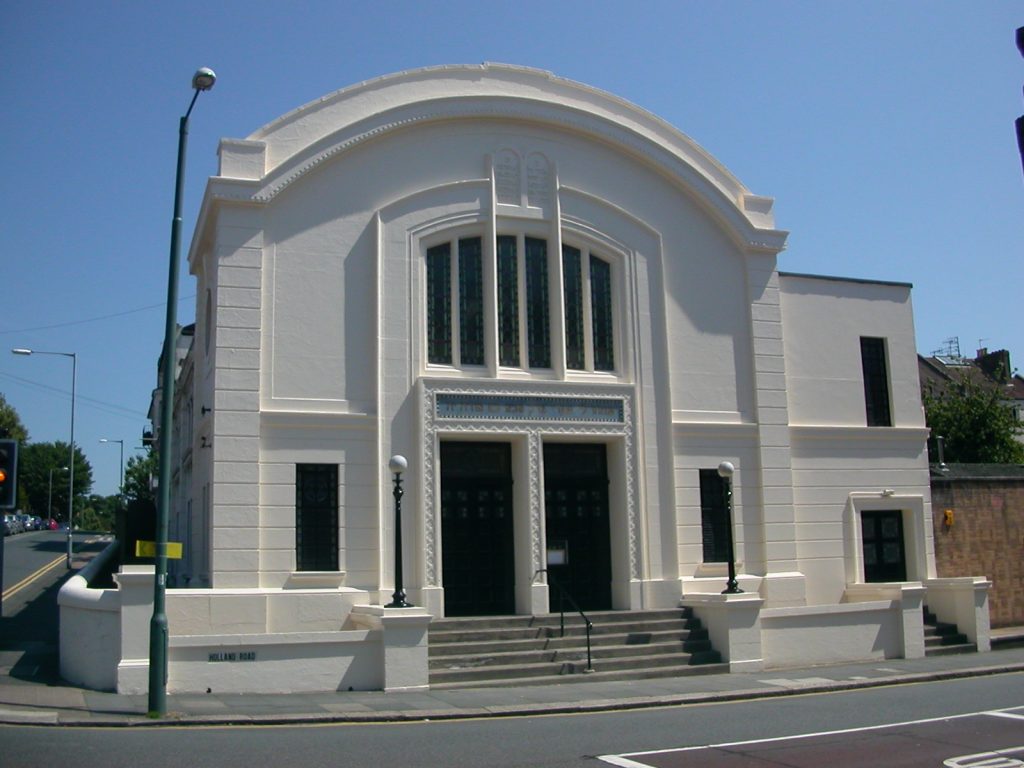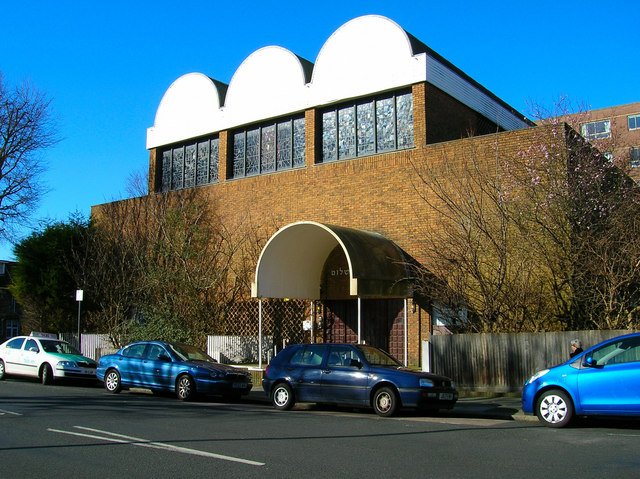Jews settled in the English city of Brighton and Hove from the mid-18th century. The city was then a famous vacation spot. Among the large Jewish families who stayed there regularly, we can mention the Goldsmids and the Sassoons.
There was a first attempt to establish a community there in 1800, but it was unsuccessful. In 1821, a new attempt met with great success. At the beginning of the 19th century, in Brighton as elsewhere in England, the majority of Jews lived in great precariousness. The Brighton Regency Synagogue was built in 1824 but sold fifty years later and has since been converted into an apartment building.

The beautiful Middle Street Synagogue
The main Jewish place of worship in Brighton and Hove is the Middle Street Synagogue , built in 1875 by architect Thomas Lainson. It had a capacity of 300 people, six times more than the previous synagogue. The Sassoon family contributed to many institutions and social activities, as well as to the construction of the synagogue. With very original architecture, the synagogue has a mixture of styles between Renaissance and Neo-Byzantine on the outside and a rose window at the top of the main facade.
As for the interior, it looks more like a basilica and is also imbued with a Neo-Byzantine style. Iron, glass, marble and mosaic combine to offer a wide decorative variety. Although less used today, it remains accessible for visits provided you prevent it in advance.

Different of Jewish streams represented
In the 20th century there were five synagogues in Brighton and Hove. Synagogues of various currents: Orthodox, Liberal and Reformed.
A 1968 census indicates that there were 7,500 Jews in Brighton and the nearby town of Hove at the time.
In 2025, the situation seems to be more pessimistic. The Jewish population is aging, and kosher shops are have gradually been closing. The Jewish community of Brighton gathered on 7 October 2024 to commemorate the one-year anniversary of the pogrom in Israel in front of the memorial. In the 11 months of its existence, the memorial has been vandalised around twenty times by anti-Semites. Four active synagogues remain in Brighton and Hove.

The astonishing Progressive synagogue
The Hove Hebrew Congregation Synagogue , built in 1930 by Mr K. Glass. To visit for its Art Nouveau style.
Also very original in style, marked by the international movement of the 1920-30s close to modernism, the Brighton and Hove Progressive Synagogue was founded in 1935.
There is also the Brighton and Hove Hebrew Congegration opened in 1959 and the Brighton and Hove Reform Synagogue built in 1967 by Derek Sharp.
Recently, the Reformed Synagogue has grown in popularity, attracting young Jewish families who were initially less involved. The city also hosts a Chabad center.

There seems to be around 2,700 Jews in Brighton and Hove today. Ralli Hall , the town’s community center, attracted mainly young people in the 1970s.
Brighton is a city that prides itself on its open and tolerant atmosphere. And yet, in the two years following the 7 October pogrom, a memorial dedicated to those murdered by Hamas was targeted more than 50 times and completely destroyed five times in Hove…
Today, an older population, including some of these former young people, occupy the premises. But the villa, a listed monument, remains a place where different populations meet, enjoying its original setting.
There are three Jewish cemeteries in Brighton and Hove. The Florence Place Old Jewish Burial Grounds , the oldest opened in 1826. Then, the Meadow View Jewish Cemetery , an Orthodox cemetery built in 1920. And finally sections of the Hove Cemetery where non-Orthodox Jews are buried.